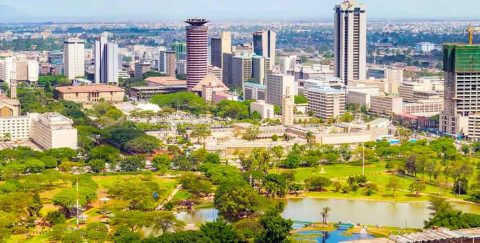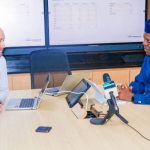New Report Harps On Accelerating Growth In Africa’s Intermediary Cities
African News, Latest Headlines, News Around Africa Friday, May 20th, 2022
(AFRICAN EXAMINER) – Intermediary cities are currently home to about 15 percent of Africa’s population, but their growth is accelerating, according to a new report co-authored by the African Development Bank (AfDB) and Cities Alliance.
A major report entitled, “Dynamics of Secondary Cities in Africa: Urbanization, Migration and Development” which was released on Wednesday in Nairobi, Kenya, also projected that by 2040, two-thirds of the people who move to urban areas will be moving to intermediary cities in Africa.
Consequently, investment needs, according to the report, are growing. “The challenge is now to guarantee basic social services and to turn these cities into economic growth hubs to rebalance the territories”, the report said.
The African Development Bank Group is a regional multilateral development finance institution, comprising three distinct entities under one management: The
African Development Bank, (AfDB) is the parent institution, and has two affiliates, the African Development Fund (ADF) and the Nigerian
The overarching objective of the AfDB Group is to spur sustainable economic development and social progress in its regional member countries (RMCs), thus contributing to poverty reduction.
Cities Alliance is a global partnership that fights against urban poverty and helps cities achieve sustainable development. The Alliance manages a multi-donor fund with the United Nations Office for Project Services as host and administrator.
The report which was unveiled at the on-going Africities 2022 Summit holding in Kisumu, provides a comprehensive overview, enriched with case studies, on intermediary cities of the continent.
AfDB’s Managing Director for East Africa, Nnenna Nwabufo described intermediary cities as the backbone of the continent. “They absorb most of urban population growth in Africa. Yet they face a significant investment gap and have very little financial resources of their own”, she added.
Similarly, the Bank’s Head of of Urban Development, Babati Mokgheti noted that the rural exodus towards the hypertrophied national capitals is generating enormous challenges, adding that it is crucial to redirect part of these flows to intermediary cities, in order to reduce the pressure on the capitals.
By investing in medium-sized cities, we create a territorial network that strengthens integration between metropolises and the countryside”, he further explained.
Over the past decade, the AfDB’s annual investments in urban areas have more than tripled and the intermediary cities have been recipients of these investments.
In Senegal, for example, the “Promovilles” programme initiated in 2017, supports thirteen intermediary-sized cities through the strengthening of transport networks and the consolidation of the technical capacities of municipalities.
Approved by the Bank in 2019, the guidelines for supporting sub-national financial actors should help to change the legal and regulatory frameworks of member states by promoting good decentralization practices.
For local actors, these guidelines have made it possible to access a new range of financing tools and direct support from the Bank. In Morocco, for example, the Municipal Equipment Fund was able to benefit directly from a line of credit from the Bank, these funds were transferred to the municipalities.
Moreover, the new Urban and Municipal Development Fund should approximate the AfDB and the municipal actors. The objective is to support them in developing coherent urban strategies. The “City Programme” launched by the Urban and Municipal Development Fund supports municipalities in the long term, enabling them to carry out a complete diagnosis of their situation, identify strategic investments and, above all, assist them in financing their projects.
Notably, the city of Kisumu, which is hosting the Africities conference, is currently joining the City Programme which includes intermediary cities such as Bizerte in Tunisia and Dodoma in Tanzania.
Coordinator of the Urban and Municipal Development Fund at the AfDB, Marcus Mayr said beyond the support provided to structure urban projects, the City Programme will gradually build a network for the exchange of best practices between municipalities sharing the same vision.
The AfDB also co-led another report with the Sahel and West Africa Club (SWAC) of the Organization for Economic Co-operation and Development (OECD) and the United Nations Economic Commission for Africa (ECA) on the influence of large African cities. Published on April 26, the report is entitled: “Dynamics of Urbanization in Africa: The Economic Influence of African Cities”.
Related Posts
Short URL: https://www.africanexaminer.com/?p=77051






















